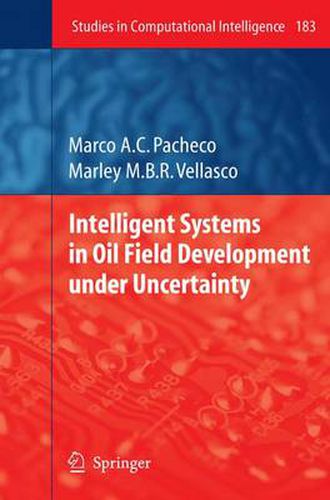Readings Newsletter
Become a Readings Member to make your shopping experience even easier.
Sign in or sign up for free!
You’re not far away from qualifying for FREE standard shipping within Australia
You’ve qualified for FREE standard shipping within Australia
The cart is loading…






This title is printed to order. This book may have been self-published. If so, we cannot guarantee the quality of the content. In the main most books will have gone through the editing process however some may not. We therefore suggest that you be aware of this before ordering this book. If in doubt check either the author or publisher’s details as we are unable to accept any returns unless they are faulty. Please contact us if you have any questions.
The decision to invest in oil field development is an extremely complex problem, even in the absence of uncertainty, due to the great number of technological alternatives that may be used, to the dynamic complexity of oil reservoirs - which involves mul- phase flows (oil, gas and water) in porous media with phase change, and to the c- plicated combinatorial optimization problem of choosing the optimal oil well network, that is, choosing the number and types of wells (horizontal, vertical, directional, m- tilateral) required for draining oil from a field with a view to maximizing its economic value. This problem becomes even more difficult when technical uncertainty and e- nomic uncertainty are considered. The former are uncertainties regarding the existence, volume and quality of a reservoir and may encourage an investment in information before the field is developed, in order to reduce these uncertainties and thus optimize the heavy investments required for developing the reservoir. The economic or market uncertainties are associated with the general movements of the economy, such as oil prices, gas demand, exchange rates, etc. , and may lead decision-makers to defer - vestments and wait for better market conditions. Choosing the optimal investment moment under uncertainty is a complex problem which traditionally involves dynamic programming tools and other techniques that are used by the real options theory.
$9.00 standard shipping within Australia
FREE standard shipping within Australia for orders over $100.00
Express & International shipping calculated at checkout
This title is printed to order. This book may have been self-published. If so, we cannot guarantee the quality of the content. In the main most books will have gone through the editing process however some may not. We therefore suggest that you be aware of this before ordering this book. If in doubt check either the author or publisher’s details as we are unable to accept any returns unless they are faulty. Please contact us if you have any questions.
The decision to invest in oil field development is an extremely complex problem, even in the absence of uncertainty, due to the great number of technological alternatives that may be used, to the dynamic complexity of oil reservoirs - which involves mul- phase flows (oil, gas and water) in porous media with phase change, and to the c- plicated combinatorial optimization problem of choosing the optimal oil well network, that is, choosing the number and types of wells (horizontal, vertical, directional, m- tilateral) required for draining oil from a field with a view to maximizing its economic value. This problem becomes even more difficult when technical uncertainty and e- nomic uncertainty are considered. The former are uncertainties regarding the existence, volume and quality of a reservoir and may encourage an investment in information before the field is developed, in order to reduce these uncertainties and thus optimize the heavy investments required for developing the reservoir. The economic or market uncertainties are associated with the general movements of the economy, such as oil prices, gas demand, exchange rates, etc. , and may lead decision-makers to defer - vestments and wait for better market conditions. Choosing the optimal investment moment under uncertainty is a complex problem which traditionally involves dynamic programming tools and other techniques that are used by the real options theory.